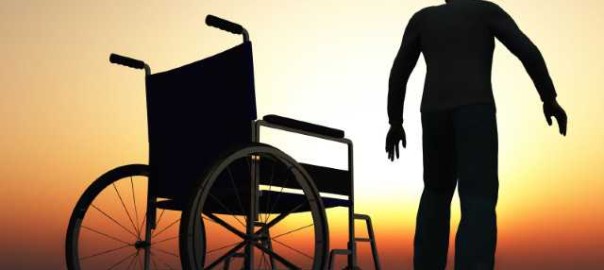Stroke Survivors Say Goodbye to Wheelchairs

Close to 800,000 Americans are struck by a stroke each year. Depending on the severity and how much of the brain is affected, the damage can be temporary or permanent. Following stroke, rehabilitation can help healthy brain cells take over the function of cells that were damaged due to the lack of blood supply. However, many stroke survivors are left confined to a wheelchair because of disabling paralysis on one side of their body.
What is stroke?
A blocked blood vessel in the brain leads to inadequate oxygen-rich blood supply, producing symptoms such as a headache, numbness, weakness, vision problems, confusion, dizziness, slurred speech, and problems with talking and walking. A hemorrhagic stroke occurs due to bleeding in the brain.
Can stem cell therapy help stroke patients walk again?
A study published in the journal Stroke has indicated that stem cell therapy may help stroke survivors say goodbye to wheelchairs. A small trial has shown promising results in a number of patients with significant improvement in their ability to walk after undergoing an injection of stem cells directly into the affected area of the brain.
Doctors are urging caution because the therapy is highly experimental and its safety still needs to be proven. However, initial results are encouraging, raising hope that the treatment may one day become standard of care.
What did the study show?
The trial, funded by a company that makes stem cell treatments and conducted by Stanford University neurosurgeon Dr. Gary Steinberg, was performed on 18 stroke survivors. “This isn’t just patients who couldn’t move their thumbs and are now able to. This is patients who were confined to wheelchairs who are now walking,” states Dr. Steinberg.
These results must be interpreted with great caution because the trial involved a very small number of patients. There was no control group against which results were compared. A serendipitous or placebo effect rather than real benefit from the stem cell treatment cannot be ruled out, and not all study participants showed dramatic results.
Dr. Cathy Sila, a neurosurgeon who is not connected to the trial in any way, cautions that stroke patients and their families should not become unduly hopeful that the former will be able to walk again. There is simply not enough data to support such a claim.
During the trial, doctors were on the lookout for any serious side effects that would preclude stem cell therapy in stroke patients. Each of the 18 patients included in the study had hit a plateau in terms of improvement with rehabilitation and physical therapy following a stroke up to five years ago. The maximum recovery from stroke occurs in the first six months following the event.
The idea was to examine whether stem cells injected directly into the area of the stroke could help rebuild damaged brain tissue and help the brain repair itself. Although the patients reported headaches, nausea, and depression following stem cell injection, no severe adverse events were noted in this small group.
What does the future hold for stroke patients?
Much larger controlled studies will need to be performed before the treatment is proven to be conclusively effective. To this end, a trial is already underway with about 150 patients. Nonetheless, the research could take years, and patients cannot expect this treatment to become widely available any time soon.
References:
1. http://www.techinsider.io/using-stem-cells-to-treat-stroke-symptoms-2016-6
2. http://www.webmd.com/stroke/


